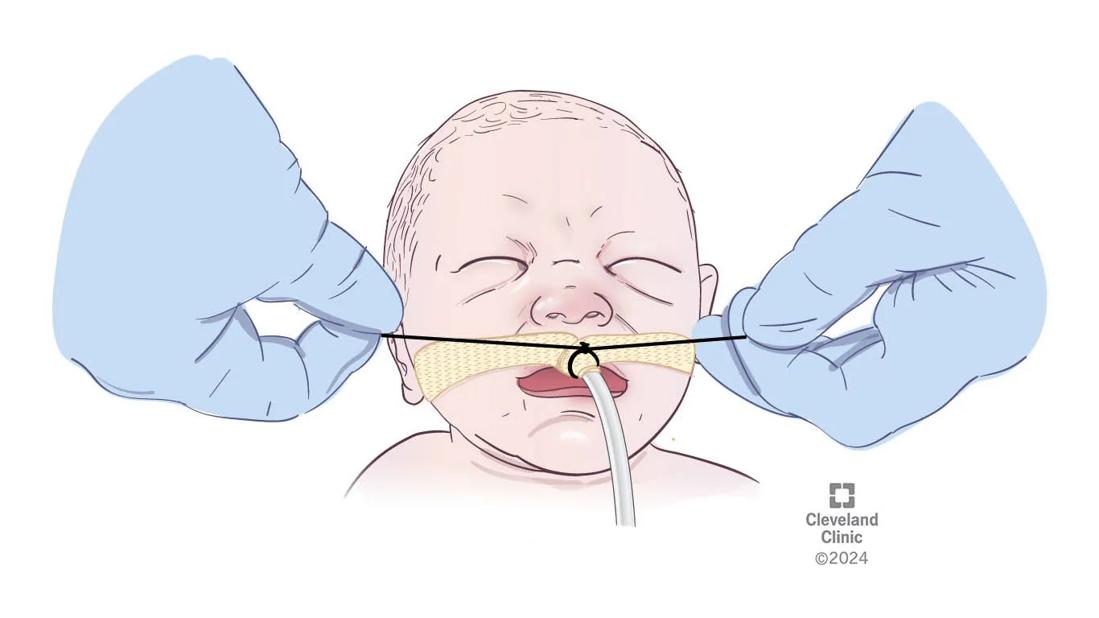Quality improvement project addresses unplanned extubation

Unplanned extubation (UE), although preventable, is a common hospital-acquired event in the neonatal intensive care unit (NICU) that can lead to a number of complications and adverse outcomes. A recent Cleveland Clinic quality improvement (QI) initiative not only demonstrated the feasibility of achieving low rates without unnecessary procurement of additional devices, but the rate of UE is now among the lowest of any children's hospital in the U.S. The team published this experience in Pediatric Research.
Advertisement
Cleveland Clinic is a non-profit academic medical center. Advertising on our site helps support our mission. We do not endorse non-Cleveland Clinic products or services. Policy
Notably, at the time of this writing, there have been no UEs in any Ohio-based Cleveland Clinic NICU in 2025.
Cleveland Clinic Children's Neonatal Intensive Care provides services to neonates in five different Ohio locations with more than 100 combined beds. Obstetrics services manage over 14,000 deliveries annually, with approximately 1,300 admissions to the NICUs.
"If you're a tertiary center with high volume and high acuity intensive care, you're going to have more intubated babies, and higher rates of UE may become a problem," stresses neonatologist Firas Saker, MD, an author of the study and Chair for Neonatal Safety, Quality and Patient Experience (N-SPQE) at Cleveland Clinic Children’s.
Endotracheal tube (ETT) dislodgement can occur for many different reasons, especially in extremely low birth weight infants weighing less than 1 to 2 pounds. Anatomically, their trachea is very short, making it challenging to keep the ETT in the optimal position. In addition, the immature skin of an extremely low birth weight infant, combined with the high-humidity environment of the incubator, can create adhesion challenges, loosening the tape affixed to the infant’s lips. These factors together increase the risk of a UE.
Complications of a UE may include cardiorespiratory events, increased oxygen needs, setbacks following reintubation, prolonged NICU stays, and even death.
Addressing UEs has become a focus within organized medicine as well. In May 2025, the American Academy of Pediatrics published a report on national efforts to standardize and implement preventive strategies across a network of pediatric hospitals. The authors of the report note that the rates of UEs are highest in the NICU population.
Advertisement
As part of Cleveland Clinic's "zero harm" patient safety initiative, a multidisciplinary N-SQPE council, under the leadership of Hany Aly, MD, Chair of Neonatology at Cleveland Clinic Children’s, set out to reduce the UE rate in mechanically ventilated infants across three NICUs. Specifically, they aimed to limit events to fewer than 1 per 100 non-tracheostomy ventilation days over the course of one year in two level III units and one level IV unit.
In this vulnerable patient population, a subtle shift in placement can result in dislodgement of the ETT. This is particularly true with early viable neonates, those born at 22 to 24 weeks of gestation, who are more likely to have increased interventions and a longer hospital course. "Even half a centimeter can make a difference between going in the right main stem bronchus or an accidental extubation," Dr. Saker says.
The N-SQPE utilized "plan-do-study-act" (PDSA) cycles, a model that facilitates sequential and data-informed movement through project stages. The following captures the primary focus of each PDSA cycle.
Advertisement

The silk suture tie securement method offers a resourceful solution to a problem that was uncovered during the QI project. As previously discussed, when neonates are placed in high-humidity incubators, a rainforest-like environment, ETT tape becomes moist and less adhesive, making a UE more likely.
The new method is now part of the team's "golden hour" protocol. For micro-preemie babies who are admitted to the NICU, the position of the ETT is first confirmed. Then, a respiratory therapist administers the silk tie securement. Dr. Saker says the method is maintainable and scalable, and he encourages other centers to explore whether it's an option that will work for them.
Dr. Saker also emphasizes that the project extends beyond the innovative silk suture tie solution. Rather, it incorporates key values of a QI project, which, among other elements, include a "collective effort and constant vigilance from all stakeholders."
"When you engage the people involved in care and recognize that everyone has something important to contribute, you can be assured that your patients will have better outcomes," he adds.
Advertisement
Advertisement

How one simple project changed the conversation about care and the patient-parental experience

E-learning modules improve learning, satisfaction and more

Specialized clinic provides comprehensive care for pediatric patients with a high-risk history

Target levels of oxygen saturation might only be achieved around one-third of the day, according to available literature

Program will support family-centered congenital heart disease care and staff educational opportunities

Center touts the benefits of neonatal MIS, trains others on the approach

Specialized care for a neonate with a rare condition